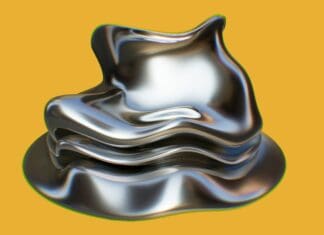This post is also available in:
 עברית (Hebrew)
עברית (Hebrew)
Researchers from the Chinese Academy of Sciences have demonstrated that biohybrid robots, which integrate lab-grown skeletal muscle tissue, can be enhanced through physical exercises similar to human workouts. This development could lead to robots with lifelike agility and movement.
A study published in the journal Advanced Functional Materials in January revealed that physical training during the growth phase of artificial skeletal muscle tissue could significantly improve its performance. By applying both electrical and mechanical stimulation, the researchers were able to double the contraction strength of the muscle tissue and make the biohybrid caterpillar robot move much faster than traditional robots with artificial muscle systems.
The key to this enhancement is an electromechanical co-stimulation system, which applies simultaneous electrical fields and dynamic mechanical resistance to the growing muscle tissue. This combined stimulation mirrors the way human muscles are trained during physical activity. As the artificial muscle tissue undergoes this process, it becomes stronger and more efficient, allowing the robot to achieve faster movement and more robust driving performance.
Using this system, the researchers were able to develop artificial muscle tissue that powered a small caterpillar-like robot. This robot was able to move at a speed of 2.38mm per second, a significant improvement compared to other robots powered by artificial skeletal muscles. The contraction force of the muscle tissue also increased by 98%, bringing the performance closer to that of natural muscle, according to South China Morning Post.
The implications for biohybrid robotics are vast. These robots, which combine living cells with synthetic materials, are designed to mimic the functionality of living organisms. With advancements in artificial muscle and sensory systems, biohybrid robots could one day possess enhanced capabilities. This new system could be a major step forward in the development of robots that are more agile, efficient, and lifelike than ever before.


























